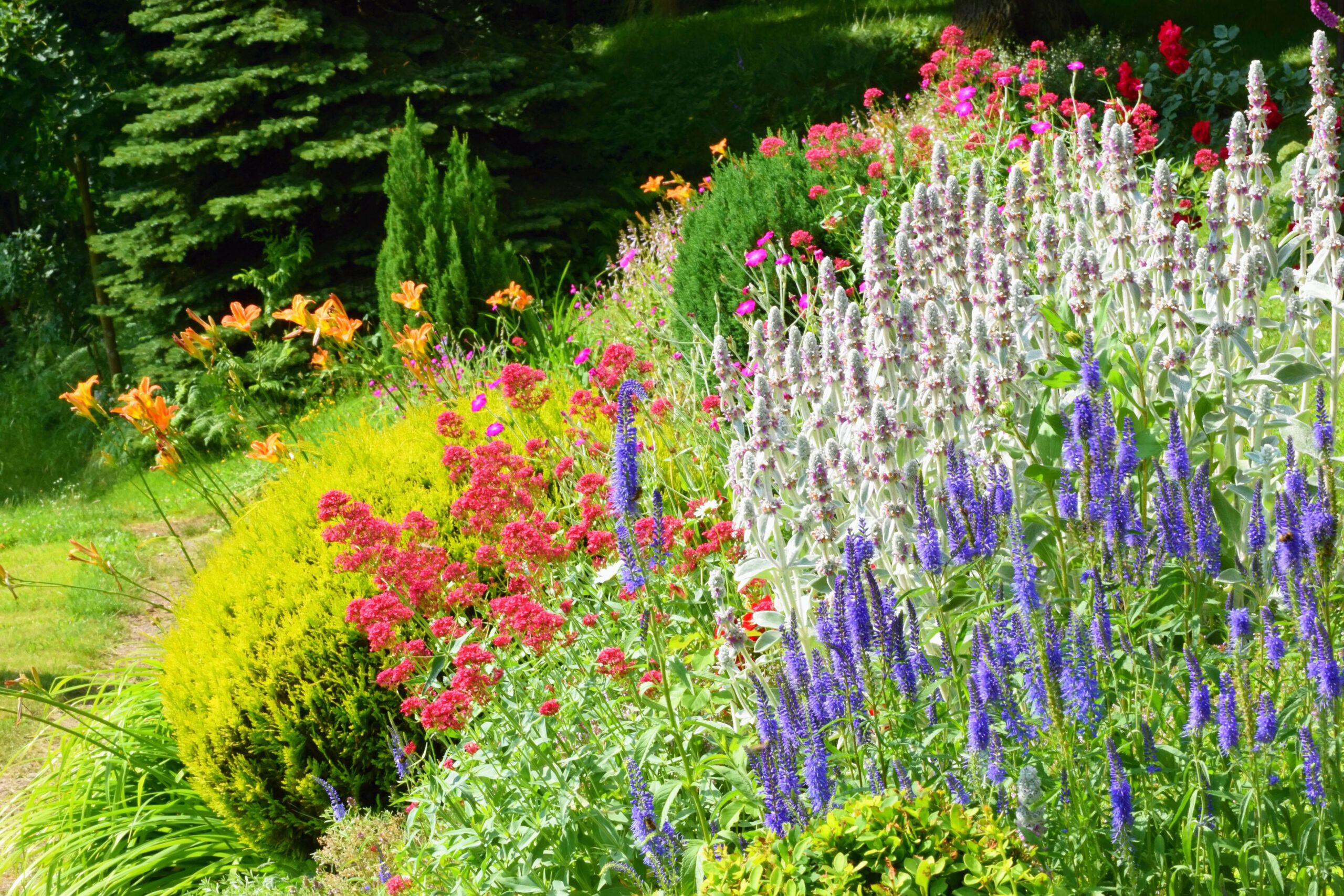Perennials offer blooms from spring to fall, require little maintenance, and can serve as the foundation of your garden. There are many varieties from which you can choose, and picking the right type is an important part of establishing the style of your garden. Read about different species of perennials below to help you choose the blooms that will fit your outdoor space best.
Power Perennial Plants
Perennials are the workhorses of the garden, and provide long-lasting beauty and structure. A perennial garden can endure for years, even decades, which makes the selection process important. To create a truly spectacular garden, choose a variety of perennials that offer different bloom times, grow to different heights, and boast varying textures. This layering maximizes the visual appeal of your garden and provides a dynamic and ever-changing garden landscape.
Incorporate plants that bloom in early, mid, and late seasons into your garden. This approach leads to a continuous display of color throughout the growing season, and will result in a resilient and low-maintenance garden. Your choices can help to create a balanced ecosystem that supports beneficial insects and pollinators.
Early Rising Perennial: Hellebore
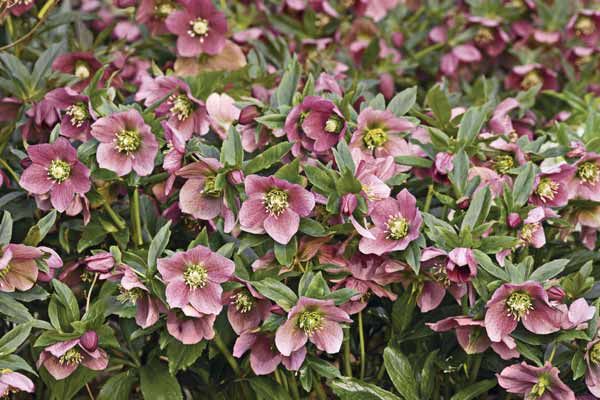
(Helleborus)
Hellebores are among the first perennials to flower, and usually push through the last remnants of snow to herald the arrival of spring. These hardy plants feature elegant, nodding blooms in shades of white, pink, purple, and green. They’re also known as the Christmas or Lenten rose, and are excellent choices for shaded or woodland gardens, where they can form attractive clumps over time.
These plants prefer rich soil that drains easily, and are especially drought-tolerant. Hellebores thrive in partial to full shade, and typically grow up to 2 feet high and wide. They can adapt to a wide range of climates.
Plant the Royal Heritage strain for a range of flower colors and robust growth.
Early Rising Perennial: False Indigo
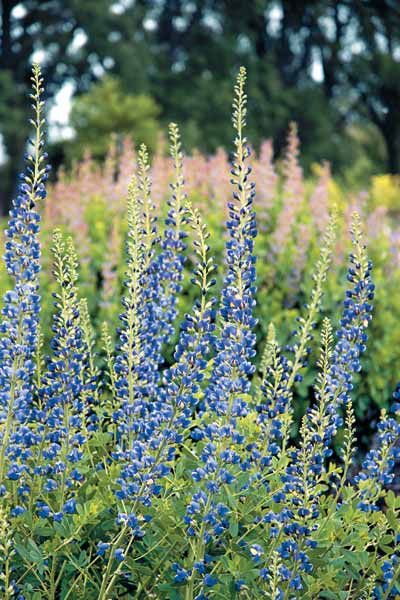
(Baptisia)
This drought-tolerant plant attracts butterflies and bees, which makes it an excellent choice for pollinator gardens. Baptisia blooms in mid to late spring, and produces spikes of pea-like flowers that are blue, purple, yellow, or white, depending on the species or hybrid.
False indigo pairs beautifully with Siberian irises, peonies, and spring-flowering bulbs. It prefers rich soil and full sun, and can grow 2 to 4 feet high, which creates an impressive presence in the garden. False indigo is an excellent choice for gardeners across much of the United States, and serves as a great backdrop for shorter perennials.
The Midnight Prairie Blue cultivar can withstand extreme heat, which makes it an excellent choice for warmer regions. This variety is resilient and boasts deep blue flowers that add depth to your garden palette.
Early Rising Perennial: Siberian Iris

(Iris Sibirica)
Siberian iris features strong, upright flower stalks and blooms with intricate patterns. Colors range from pristine white to deep violet and near-black. Siberian irises typically bloom from mid-May through June, and provide a vibrant display in late spring gardens. Their tall, stately flowers can transform an ordinary garden into an extraordinary one.
These plants grow successfully alongside foxgloves, hardy geraniums, and perennial salvias. Siberian irises prefer moist conditions, but they can tolerate a range of soil types. They perform well in both sun and shade, and reach heights of up to 4 feet tall and wide. Siberian irises are an excellent choice for gardeners across much of North America, and their foliage remains visually striking long after the flowers fade.
Plant the Snow Queen variety for repeat, glowing blooms throughout the season.
Early Rising Perennial: Peony
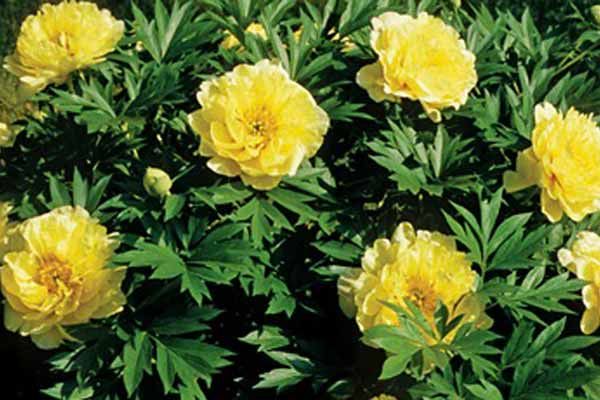
(Paeonia)
Peonies feature lush, fragrant blooms, and can thrive for 50 years or more. Peonies typically flower in late spring or early summer, and cultivars such as Coral Charm thrive in warm regions. Their blooms, which come in a variety of colors and forms, are beautiful and fragrant.
These versatile perennials pair beautifully with irises, baptisias, and foxgloves. Peonies prefer rich soil that drains easily, but are much more low-maintenance than other plants. They grow best in full sun to partial shade, and reach heights of up to 3 feet tall and wide. They’re suitable for a wide range of climates.
Plant the intersectional peony Bartzella for huge, lemon-yellow blooms that grow out of rounded bushes.
Early Rising Perennial: Coral Bells
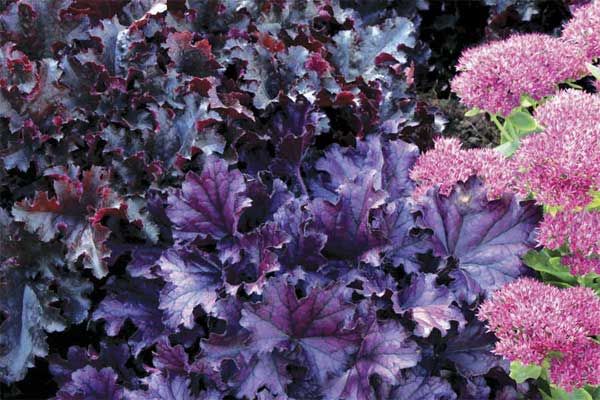
(Heuchera)
Coral bells feature stunning foliage, and are especially versatile in the garden. They boast maple-like leaves in colors such as chartreuse, apricot, purple, and pewter. Coral Bells’ foliage adds an additional layer of vibrancy and texture to your garden.
Coral bells are excellent for mass plantings or as companions to hostas, phlox, or toad lilies. They prefer neutral to slightly acidic soil that drains easily. They can thrive in sun or partial shade, though their foliage may fade in full sun. Coral bells typically grow up to 2 feet high and wide.
Plant Forever Purple for a striking purple plant that maintains its color throughout the season.
Heat Seeking Perennial: Coneflower
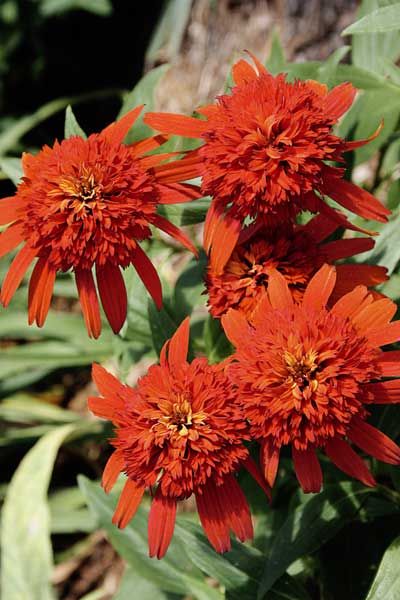
(Echinacea)
Coneflowers are quintessential perennials for summer gardens, and feature long-lasting blooms that are especially drought-tolerant. The classic purple coneflower remains a garden staple, but new hybrids can be lime green, orange, and hot pink. These versatile plants flower for months, attract butterflies, and resist deer and rabbits.
Coneflowers pair well with catmint and phlox in the garden. They thrive in hot, humid conditions, but can still flourish in the cold. These sun-loving perennials typically grow up to 3 feet high and wide.
Plant Hot Papaya for a fade-resistant variety that boasts vibrant orange blooms.
Heat Seeking Perennial: Cranesbill
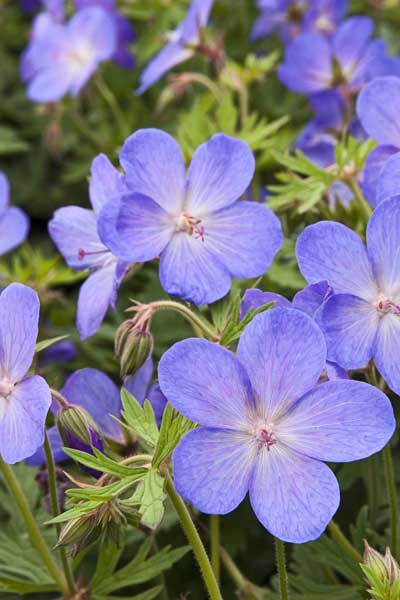
(Hardy geranium)
Cranesbill, which is also called hardy geranium, features pink, white, and blue flowers that attract butterflies. You can use cranesbills to underplant roses, or combine them with phlox and coreopsis.
These perennials prefer rich soil that drains easily, but can tolerate periods of drought. They perform well in full sun or afternoon shade and in warmer zones. Cranesbills typically grow up to 3 feet high and wide, which makes them suitable for gardens across most of the United States. They are flashy and low-maintenance, which makes them suitable for gardeners with hectic schedules.
Plant the Johnson’s Blue variety for vibrant azure blooms. This variety enhances the visual appeal of any garden.
Heat Seeking Perennial: Phlox
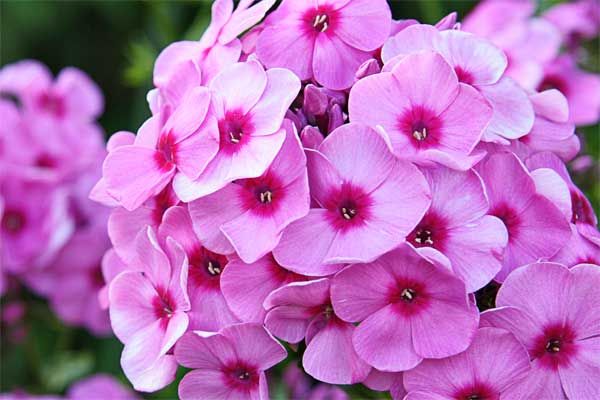
(Phlox)
Phlox is a versatile genus of perennials that features tall summer-flowering varieties and low-growing spring bloomers. New cultivars feature improved resistance to powdery mildew, a common problem with older varieties. Phlox blooms can be several different colors, and can attract butterflies to the garden. Their fragrance and extended flowering period makes them a haven for pollinators.
Summer phlox pairs beautifully with coneflowers, daylilies, and perennial salvias. These plants prefer cool, moist, and fertile soil that drains well. It may struggle in areas that are hot and humid. Phlox thrives in full sun to partial shade, and summer varieties typically grow up to 3 feet high and 2 feet wide. Phlox adds splashes of color throughout a garden.
Plant the cultivar Shortwood for pink, robust blooms that are low-maintenance.
Heat Seeking Perennial: Delphinium
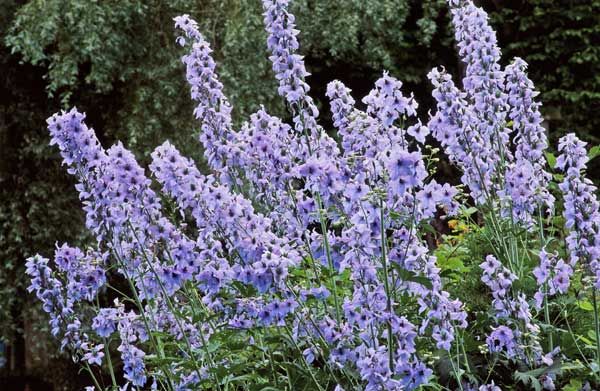
(Delphinium)
Delphiniums feature tall spikes of colorful flowers. Some species can be challenging to grow, but new hybrids are more vigorous and self-sufficient. These statuesque plants make excellent companions for bee balm and Shasta daisies.
Delphiniums prefer rich soil that drains easily, and you may need to treat them as annuals in hot and humid climates. They perform best in full sun or partial shade, and can grow up to 6 feet tall and 2 feet wide.
Plant the New Millennium for reliable disease-resistance or Morning Lights for beautiful pastel blooms.
Heat Seeking Perennial: Tickseed
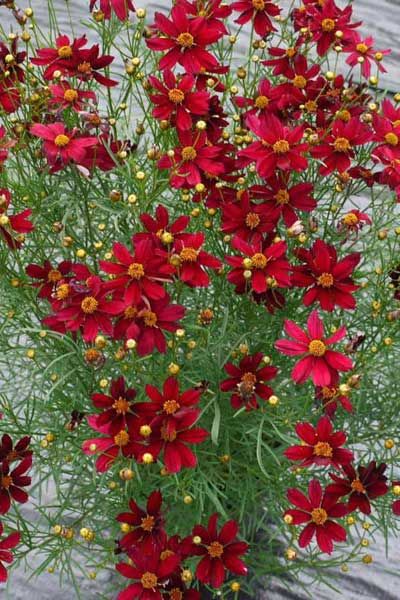
(Coreopsis)
Tickseed, which is also called coreopsis, is a prairie and cottage garden favorite that has seen significant development in recent years. Hybridizers have expanded the color palette of these cheerful flowers, and have created new varieties that feature larger blooms and glossier leaves. Coreopsis can thrive in cold and hot climates and is drought-resistant, which makes it an excellent choice for challenging garden conditions.
These versatile perennials work well alongside salvias, echinaceas, and baptisias, and can grow up to 3 feet high and wide. Tickseed plants thrive in full sun and soil that drains easily. Cut back coreopsis after the first flush of flowers for extended blooming periods
Plant Red Satin for striking, wine-colored petals that are especially resistant to heat.
Heat Seeking Perennial: Daylily
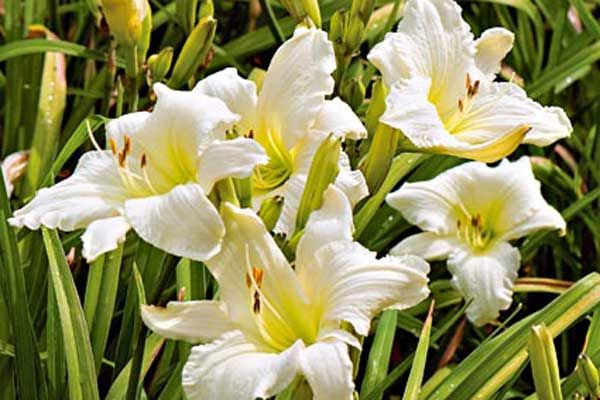
(Hemerocallis)
Daylilies are among the most reliable and versatile perennials available, and feature more than 60,000 registered hybrids. These plants come in a wide variety of colors, forms, and bloom times. Lush, trumpet-shaped blooms and vigorous growth periods make daylilies a classic garden centerpiece.
Consider your climate when you’re deciding between evergreen varieties, which are best for hot climates, or dormant varieties, which are better for cold zones. Daylilies thrive in full sun, grow up to 3 feet high, and are especially low-maintenance.
Plant tetraploid cultivars such as the all-white Lady Elizabeth for large flowers and stunning blooms.
Heat Seeking Perennials: Elephant Ear

(Colocasia)
Elephant ears feature bold, tropical foliage that adds a dramatic touch to any garden. They’re particularly popular in Southern gardens, but you can grow them as container plants in cooler regions. These plants have impressive leaves that grow to be black, purple, and chartreuse.
Pair elephant ears pair with cannas and calla lilies to create a lush, tropical effect. Elephant ears prefer rich, moist soil, but can tolerate ordinary garden soil if you successfully irrigate it. They perform best in sun or partial shade and can grow up to 6 feet high and wide. Bold foliage delivers drama and visual interest, season after season.
Plant Black Magic, which boasts 2-foot-long purple-black leaves, for a dramatic display.
Heat Seeking Perennial: False Spirea
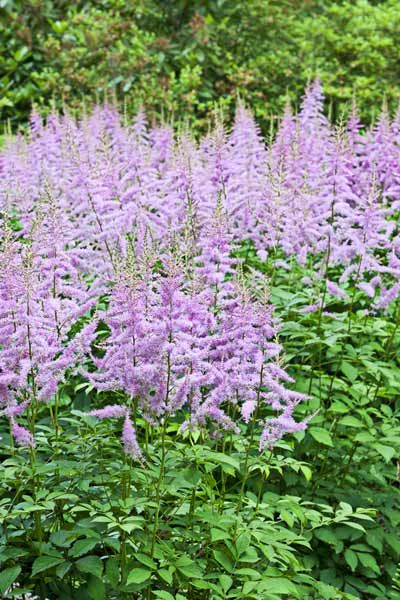
(Astilbe)
Astilbes, which are also called false spirea, offer colorful plumes of flowers in shaded gardens when other shade plants have finished blooming. These rugged plants repel pests and deer, which makes them an excellent low-maintenance option for woodland borders or mass plantings. Their fluffy, feather-like blooms add texture and volume to shaded corners.
Astilbes pair beautifully with hostas, hellebores, ferns, hardy begonias, and lungworts. They prefer rich, acidic, and moist soil, and thrive in partial shade. Flower schedules vary, but many blooms flower from mid-June to the end of August. Astilbes grow up to 4 feet high and 2 feet wide, and can fill in gaps that other plants leave.
Plant Rhythm & Blues for a striking, heat-resistant plant that offers outstanding hot-pink flowers that hover above dark green foliage.
Heat Seeking perennial: Sage
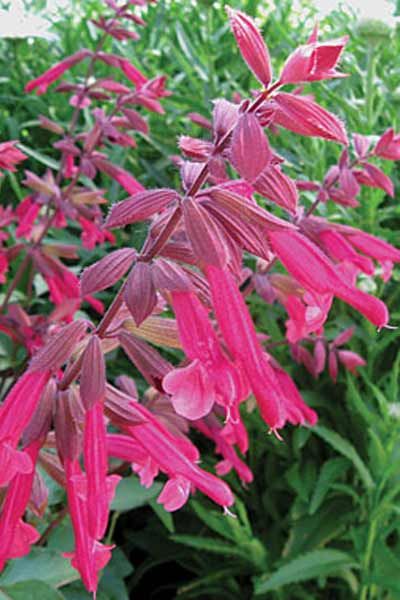
(Salvia)
Perennial salvias feature long-stemmed blooms, and are especially drought- and heat-resistant. There are more than 750 species available, such as the popular hybrids S. nemorosa, which feature aromatic foliage and purple, white, pink, and sky-blue flowers.
Salvias are attractive to both butterflies and hummingbirds, which makes them excellent additions to wildlife gardens. They pair well with shrub roses, daylilies, coreopsis, and ornamental grasses. These versatile plants prefer average soil types that drain well.
Heat Seeking Perennial: Hosta
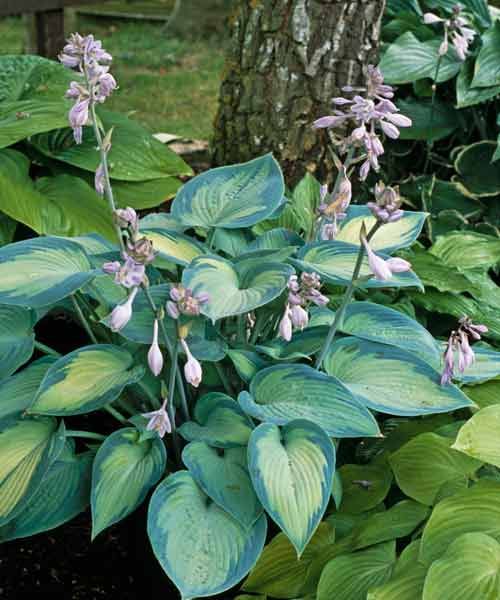
(Hosta)
Hostas are low-maintenance and shade-tolerant, and are the most popular perennials in the United States. They boast an impressive array of foliage colors, such as lustrous gold, vibrant green, and cool blue. They also feature striking variegation. Plant breeders continue to expand the hosta palette, and are growing more attractive and fragrant flowers.
Different hosta varieties offer different advantages. Gold-leafed types, for instance, demonstrate a higher tolerance for sunlight, while fragrant-flowered varieties thrive in Southern climates, and add delightful scents to shade gardens. Pair hostas with shade-tolerant shrubs such as azaleas and viburnums, or fellow perennials such as ferns and hellebores.
Hostas prefer rich, moisture-retentive soil that drains well. They flourish in partial or full shade, though light requirements can vary by cultivar. Hostas can grow up to 3 feet high and 2 feet wide, and are suitable for a wide range of climates across North America. They feature diverse sizes, colors, and textures.
Heat Seeking Perennial: Lavender

(Lavandula)
Lavender features fragrant blooms and silvery-green foliage, and choosing the right variety for your climate is very important to the plant’s success. English lavender (Lavandula angustifolia) is the most versatile variety, and can thrive in different conditions, while French lavender (L. dentata) is suitable for warmer conditions. Most lavender varieties reach their peak flowering period from early to midsummer, and create a stunning display of purple, blue, or white spikes.
Hybrid lavenders (L. x intermedia) are suitable for gardeners in shifting climates, and are heat- and humidity-resistant. Lavenders prefer alkaline soil that drains easily, and thrives in full sun. Lavender can grow up to 3 feet high and wide, though size can vary by species and cultivar.
Plant the Phenomenal cultivar if you live in a challenging climate. This new hybrid is tolerant of heat and humidity, and is resistant to foliar diseases.
Late Blooming Perennial: Sneezeweed
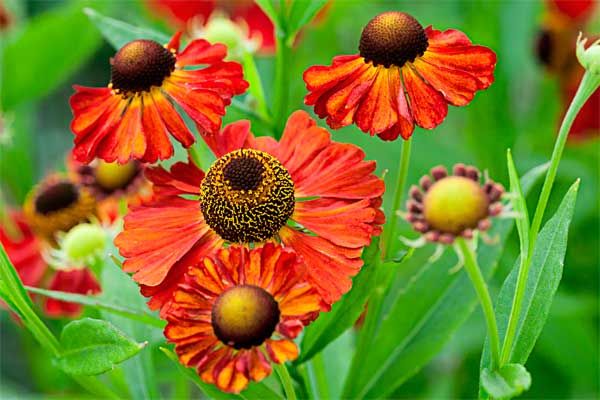
(Helenium)
Helenium, which is also called sneezeweed or Helen’s flower, offers autumnal colors to late-season gardens. Its daisy-like blooms, which are orange, red, copper, or yellow, stand tall and proud, and create a breathtaking focal point as summer fades into fall. This plant blooms for 6 to 10 weeks between summer and the first frost, and provides a reliable source of color.
Helenium pairs well with other late-season bloomers, such as catmint (Nepeta) or torch lilies (Kniphofia), which complement Helenium’s upright habit and warm color palette. Helenium prefers cool, moist soil conditions, but it can adapt to a variety of garden environments if you care for it properly. This perennial thrives in full sun exposure, and can grow 5 feet tall and 3 feet wide. This makes it an excellent choice for the middle or back of perennial borders.
Plant the classic Moerheim Beauty to showcase the best attributes of Helenium, such as its rich, coppery-red flowers that eventually darken to deep mahogany.
Late Blooming Perennial: Black-eyed Susan
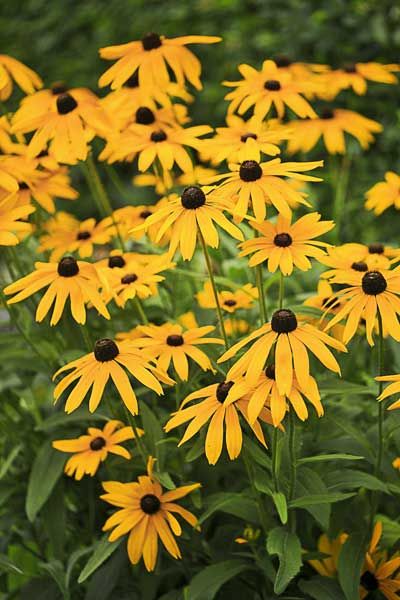
(Rudbeckia)
Rudbeckia, which is also known as black-eyed Susan or coneflower, is an essential fall garden plant. This North American native boasts cheerful, daisy-like flowers that bring a vibrant splash of gold to any late-season landscape. The plants are drought-tolerant and can bloom for several months. Rudbeckias typically begin their show in mid to late summer and continue into fall. They’re an important source of nectar for pollinators when many other plants have finished flowering.
Rudbeckias pair beautifully with the feathery textures of ornamental grasses. Sedums, which feature succulent leaves and pink or red flowers, offer a striking juxtaposition to Rudbeckia’s sunny blooms. Russian sage (Perovskia atriplicifolia) provides a soft, lavender-blue backdrop that perfectly complements the bold yellow of black-eyed Susans. Rudbeckias prefer fertile soil that drains easily, and can adapt to average garden conditions, which makes them suitable for a variety of landscape situations. They thrive in full sun exposure, and can grow up to 7 feet high and 2 feet wide.
Late Blooming Perennial: Aster
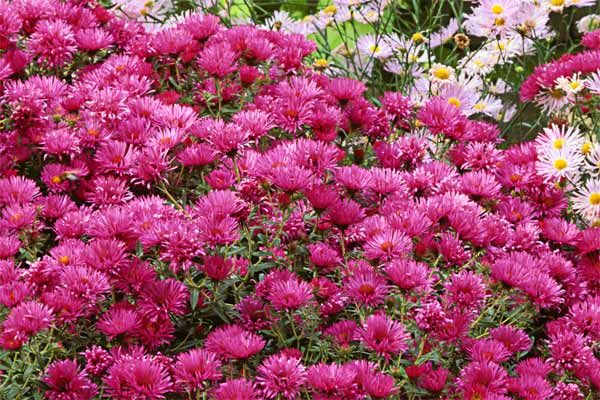
(Symphiotrichum)
New England asters (Symphyotrichum novae-angliae) are quintessential late-season bloomers, and paint autumn gardens with rich hues of rose, purple, and lavender. They come in a variety of sizes and colors that suit various landscape needs.
The New England species stands out as a true showstopper. Its tall, statuesque form and prolific blooms create a dramatic focal point in the fall garden, and attract butterflies, bees, and other pollinators when many other plants have finished flowering.
New England asters prefer moist soil, but they can adapt to a variety of garden conditions. They’re resilient, can thrive in sun and shade, and can function as formal borders or naturalistic meadow plantings.
These plants grow up to 6 feet tall and 3 feet wide, and create an impressive vertical element in the garden. Their height makes them suitable for the backs of perennial borders or as standalone specimens in larger landscapes.
Late Blooming Perennial: Sunflower
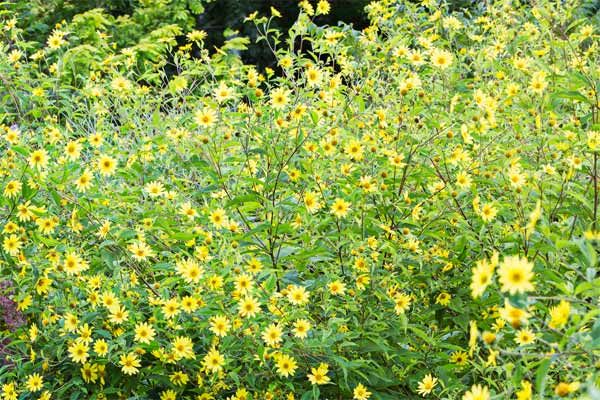
(Helianthus)
Perennial sunflowers (Helianthus) feature daisy-like blooms in sunny yellows, warm oranges, rich reds, soft creams, deep purples and bronzes. They bloom from midsummer to fall, and create a stunning backdrop in perennial borders.
These plants provide vital nectar for bees, butterflies, and other pollinators, and thrive beside complementary late-season plants. Goldenrods (Solidago) echo their yellow tones, while asters and Joe Pye weed (Eutrochium) offer contrasting colors and forms. This combination creates a harmonious late-summer symphony.
These adaptable plants tolerate a wide range of garden soils, but require regular watering to continue blooming. Perennial sunflowers can grow to 10 feet tall and 4 feet wide in full sun, though sizes vary among cultivars.
Late Blooming Perennial: Korean Mums
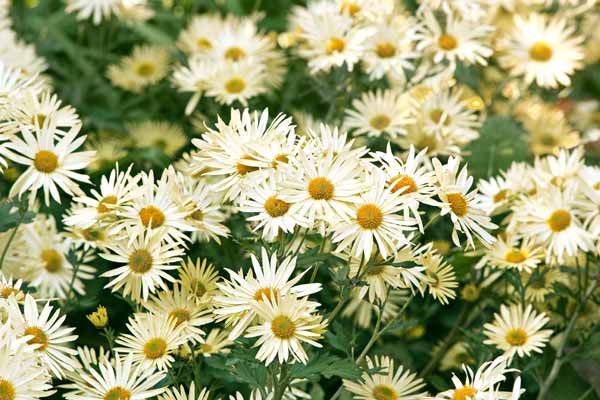
(Chrysanthemum x Koreana)
Korean chrysanthemums (Chrysanthemum koreanum) are refreshing alternatives to traditional garden mums, and boast naturalistic forms and late blooming periods. They provide reliable color when many other plants have finished their shows.
Korean mums form attractive mounding shapes with lush foliage, and add structure and texture to the garden even before their blooms appear. These plants transform into a sea of daisy-like flowers in autumn.
Korean mums are resistant to pests and diseases, and last long in many garden types, which makes them a valuable addition to perennial borders. They return year after year with very little maintenance.
These versatile mums pair beautifully with other late-season stars. Consider planting them alongside the dusky pink blooms of Sedum Autumn Joy, the golden plumes of goldenrod (Solidago), or the airy lavender spires of Russian sage (Perovskia). Such combinations create a rich tapestry of color and texture in the autumn garden.
Korean mums prefer rich soil that drains easily, and thrive in sun, but can tolerate shade. They can grow up to 3 feet high and wide, and are perfect for the middle of borders or as standalone specimens in smaller gardens.
